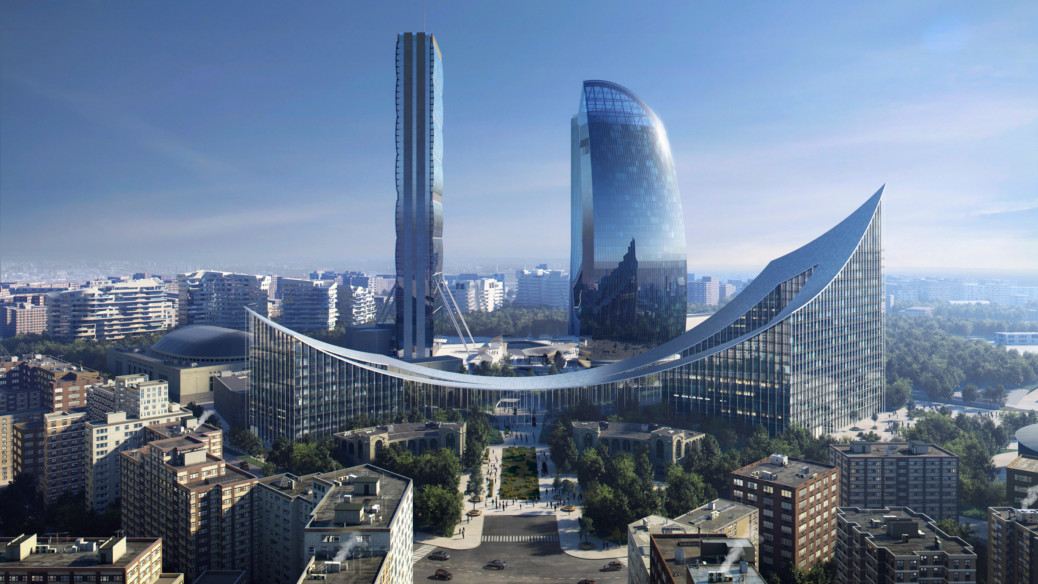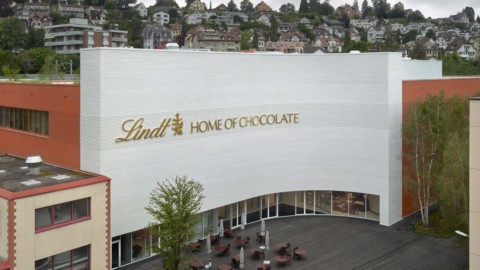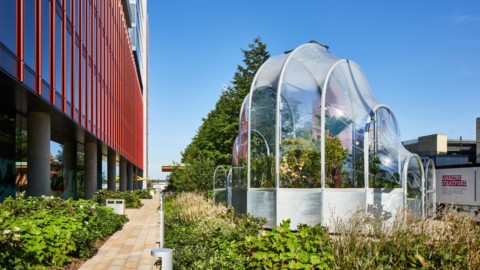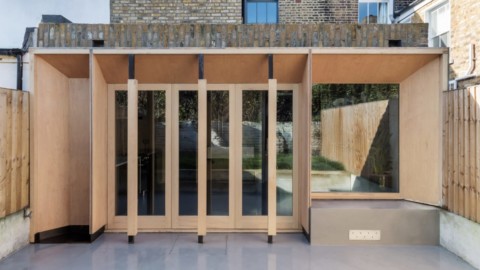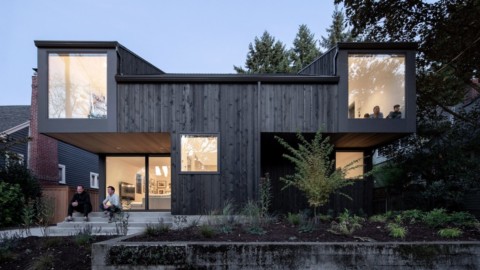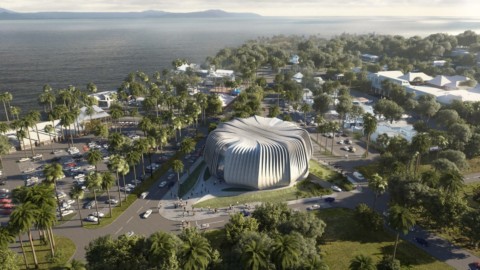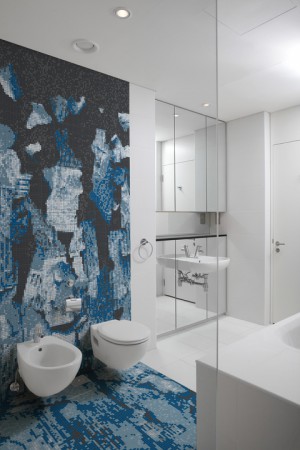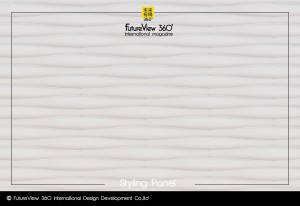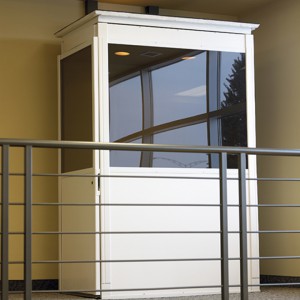BIG has unveiled visuals of The Portico that will mark the entrance to CityLife, a district in Milan that has buildings designed by Zaha Hadid, Daniel Libeskind and Arata Isozaki.
Distinguished by its giant sweeping rooftop, The Portico will fill the final two plots of the residential and commercial development that is located on the site of the Italian city’s former trade fair grounds.
BIG揭開了門廊的影像,這些影像將標誌著CityLife的入口,CityLife是米蘭的一個區域,該區域的建築由Zaha Hadid,Daniel Libeskind和Arata Isozaki設計。
門廊以其巨大的屋頂為特色,將填補位於意大利前貿易展覽會場址上的住宅和商業開發區的最後兩個地塊。
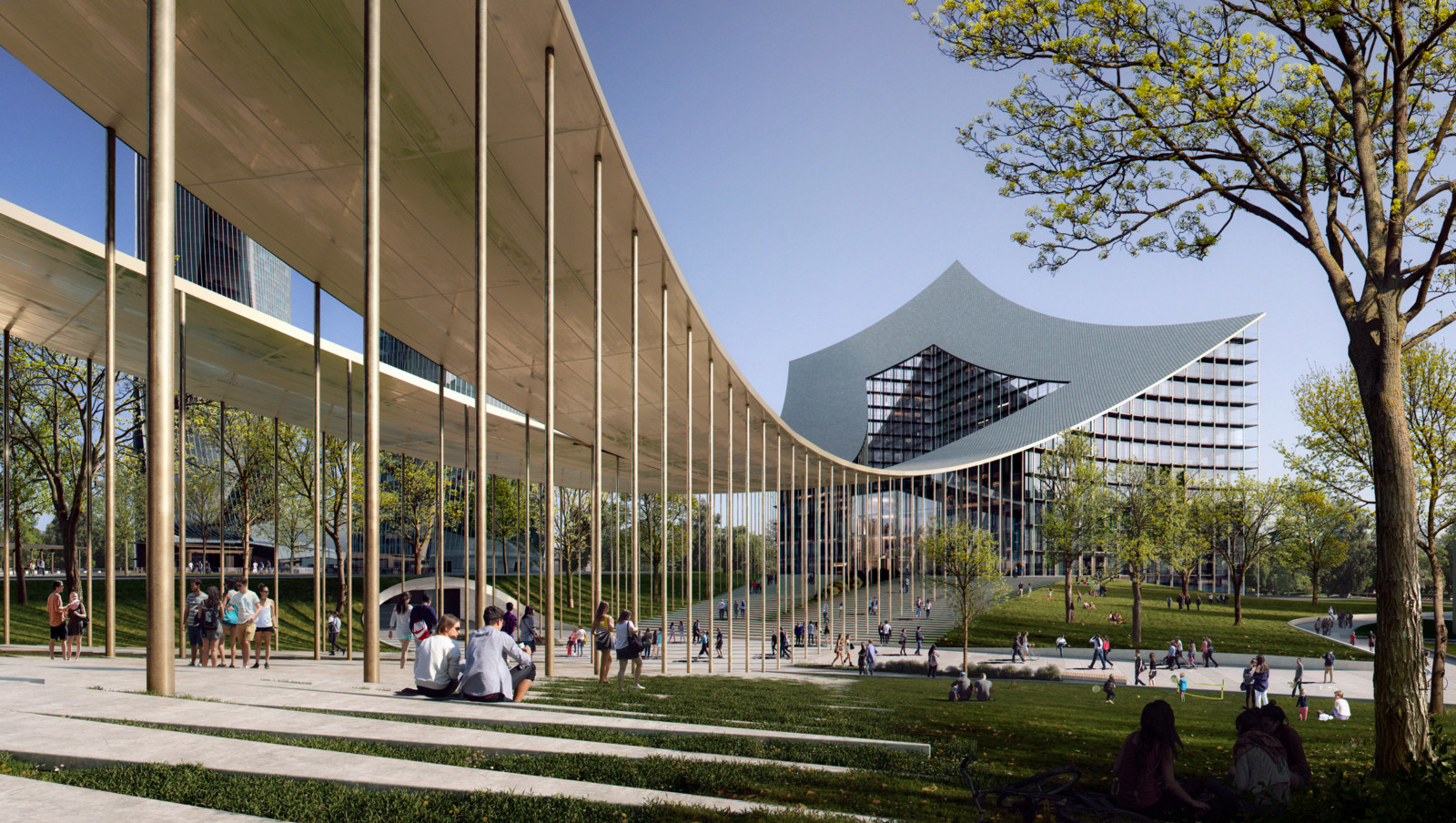
BIG was commissioned to design a fourth tower for CityLife, but instead proposed two small buildings joined by a giant, curved canopy that is designed to act as an “urban-scale portico”.
The architecture studio designed the building to provide the district with public space that will “complete” the development.
BIG受委託為CityLife設計第四座塔樓,但提出了兩座小型建築,並由一個巨大的弧形頂篷連接起來,該頂篷旨在充當“城市規模的門廊”。
建築工作室設計了建築物,為該區提供了將“完成”開發的公共空間。
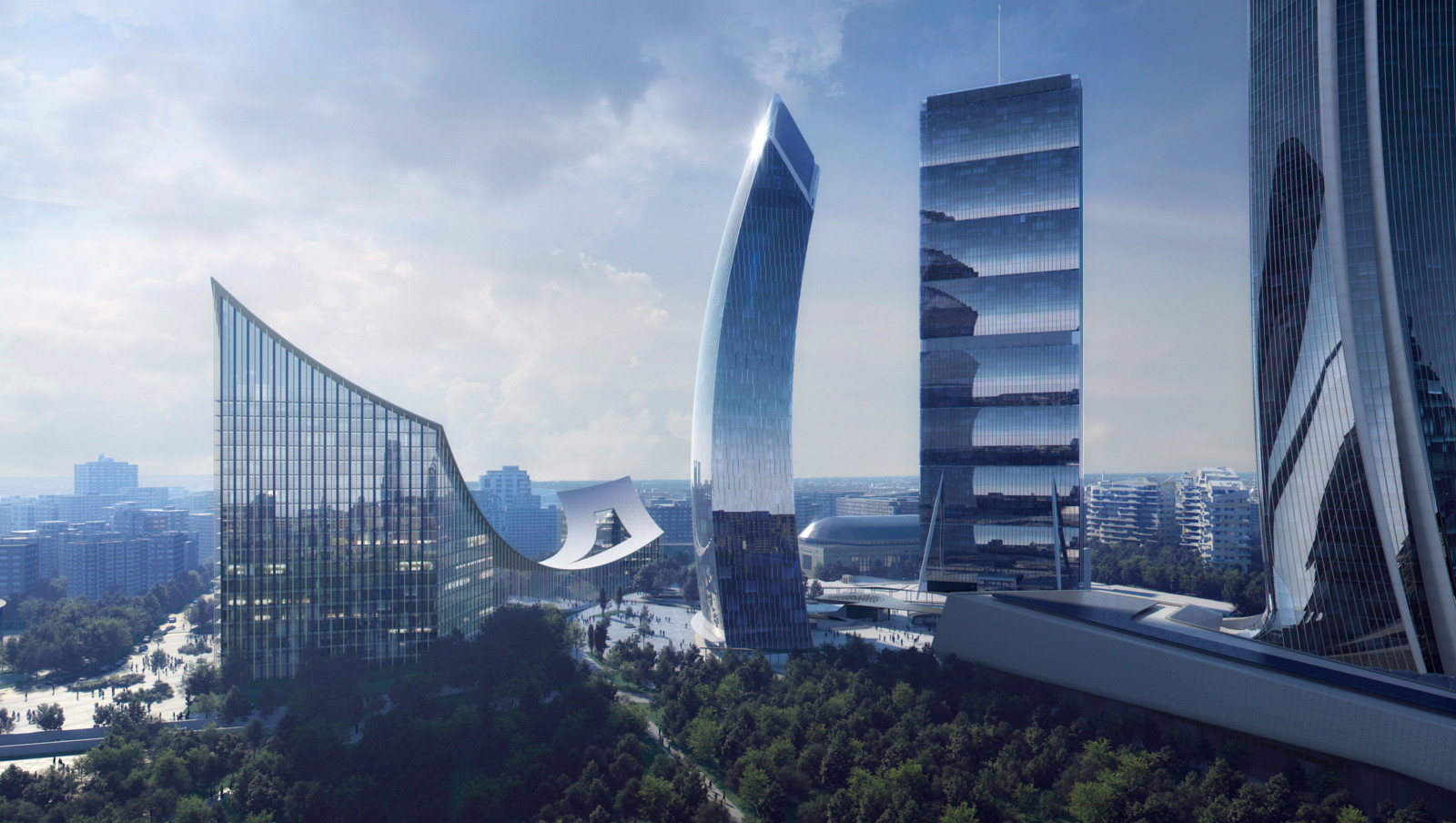
“The site forms a missing link between the three iconic towers in the City Life masterplan and the surrounding city,” explained Andreas Klok Pedersen, partner at BIG.
“Instead of creating a fourth tower on the site, we started quite early in the process to look into lower perimeter blocks that could become a more human-scale entrance into the area,” he told Dezeen.
“The resulting buildings are neither high rise or low rise, but a hybrid between the two. The canopy frames and completes the existing skyline rather than competing with it.”
BIG合夥人安德烈亞斯·克洛克·佩德森(Andreas Klok Pedersen)解釋說:“該地點構成了城市生活總體規劃中三座標誌性建築與周圍城市之間的缺失環節。”
他告訴Dezeen:“我們不是在現場上建造第四座塔樓,而是在過程的早期開始研究較低的外圍街區,這些街區可能會成為該地區更人性化的入口。”
“最終的建築物既不是高層建築也不是低層建築,而是兩者之間的混合體。頂篷構築並完善了現有的天際線,而不是與其競爭。”
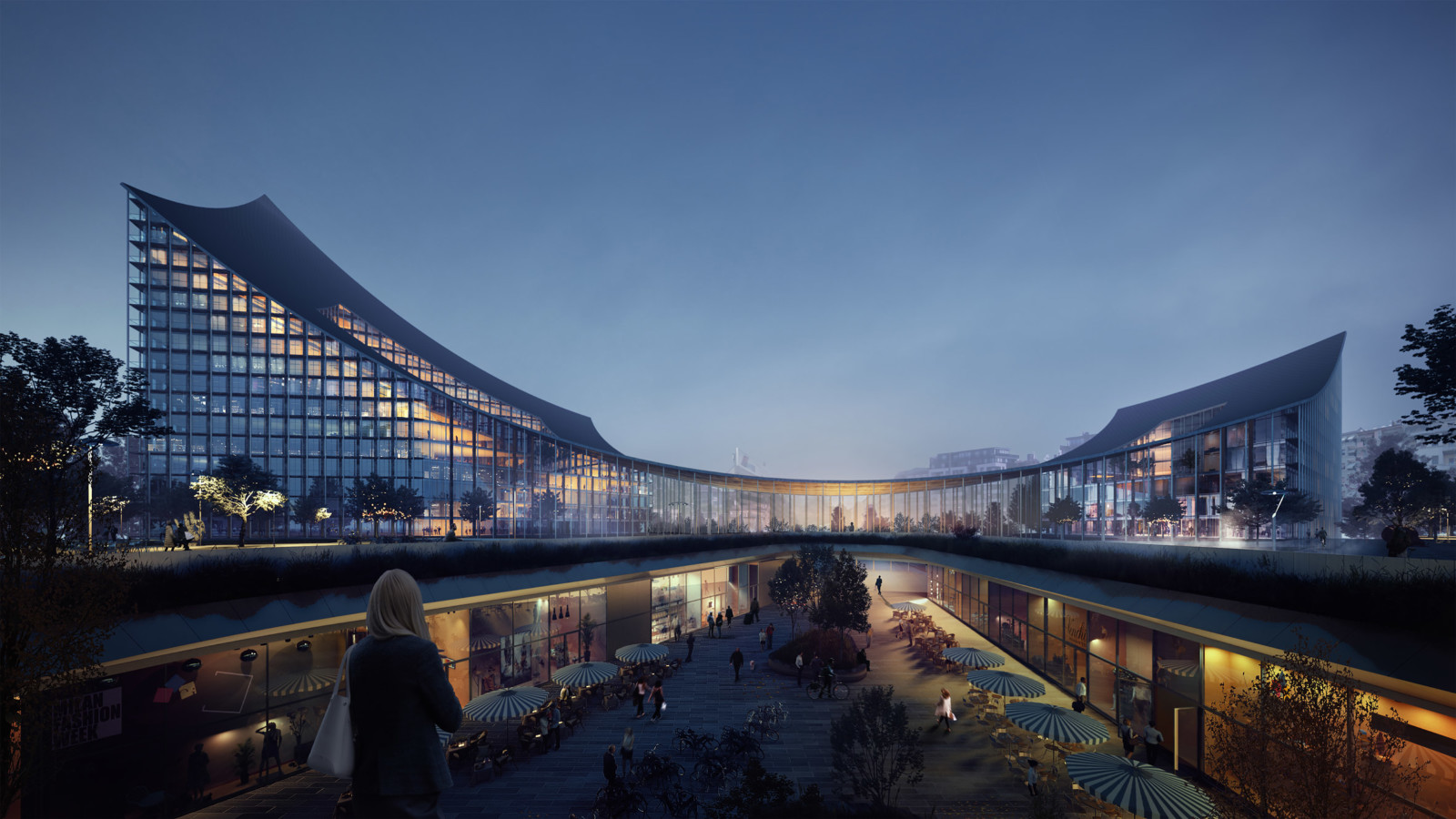
The site of The Portico is currently divided into two distinct plots by a large driveway and taxi rank that extends between them.
BIG’s proposal imagines the removal of this car ramp to transform the area into a pedestrian-friendly park that will become the social heart of the development.
The Portico的場地目前被大型車道和滑行道在其之間延伸,分為兩個不同的地塊。
BIG的提案設想拆除這條汽車坡道,將其轉變為步行友好型公園,這將成為該開發項目的社會核心。
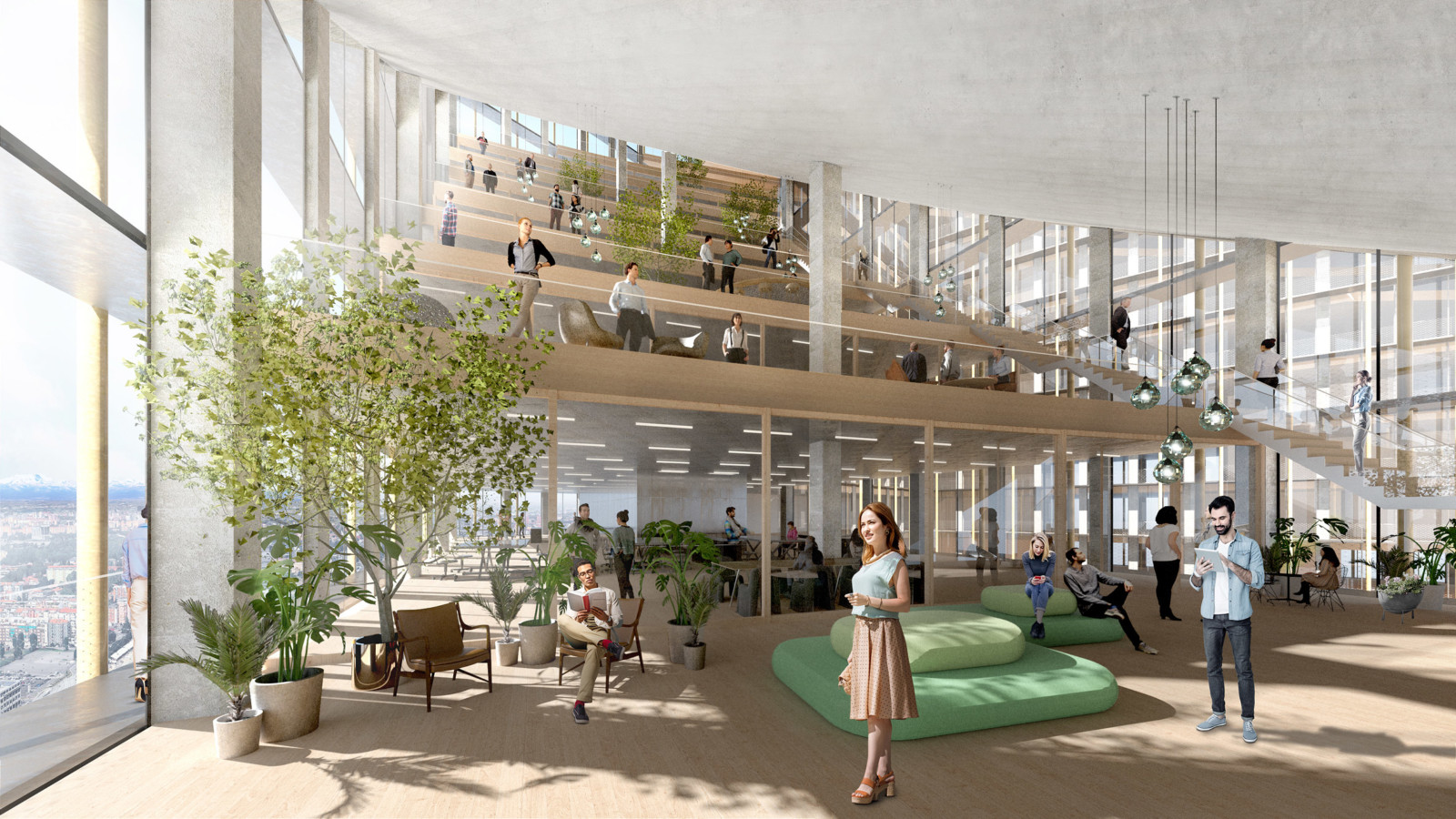
“By interconnecting the two towers with a catenary canopy between the two roofs, we were able to transform the existing space for car infrastructure into a covered, shaded and pedestrian public realm that invites people into CityLife,” explained Pedersen.
“And by continuing the curve of the canopy into the roofs, the two buildings reads as one composition – trimmed by one spherical geometry.”
“通過將兩個塔樓與兩個屋頂之間的懸垂式雨棚相互連接,我們能夠將汽車基礎設施的現有空間轉變為一個有頂,遮蔭和步行的公共場所,吸引人們進入CityLife,” Pedersen解釋說。
“通過將天篷的曲線延續到屋頂,這兩棟建築物被視為一種組成,並被一種球形幾何體修剪。”
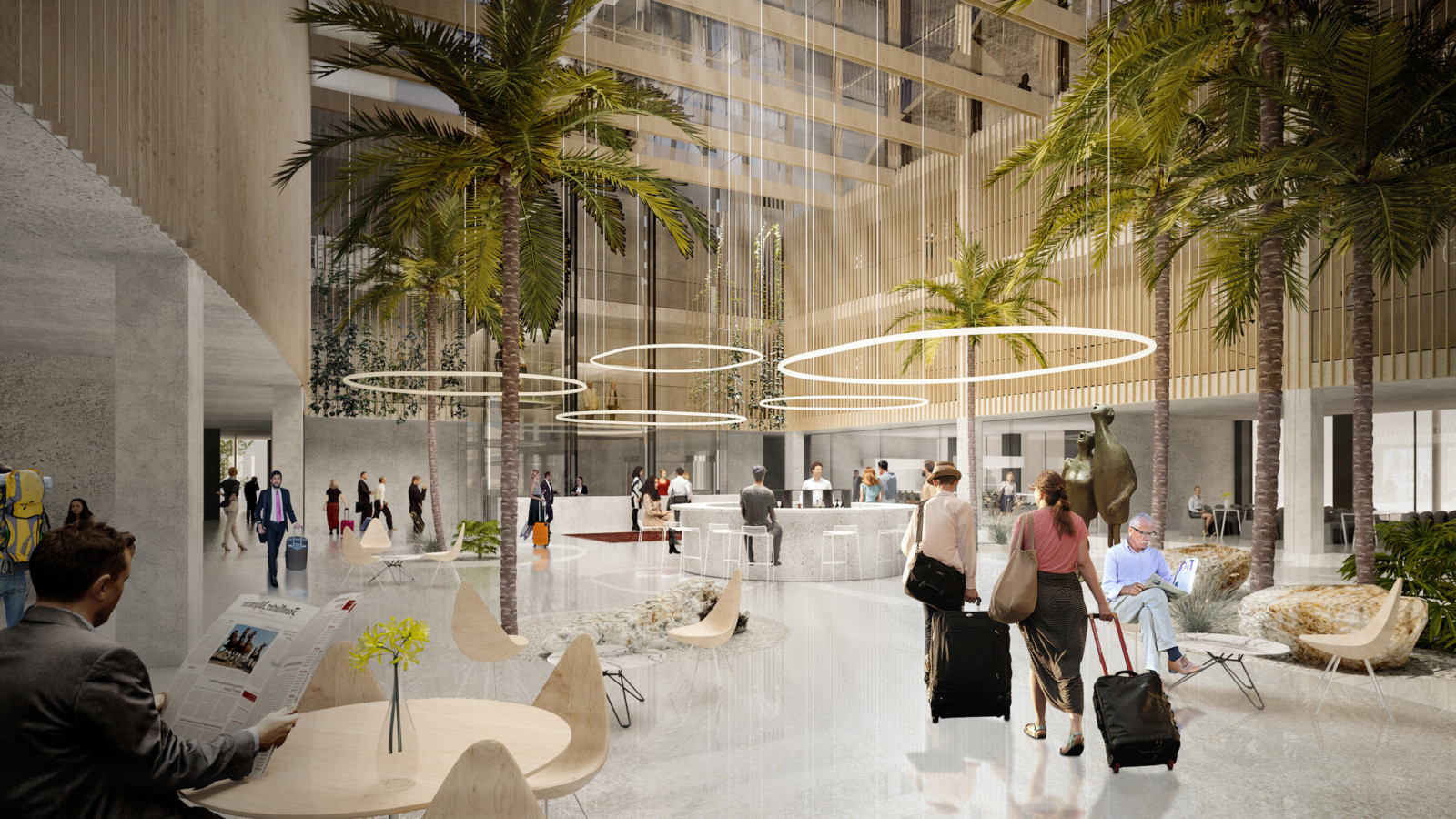
Once complete, The Portico’s curved canopy will span 140 meters between the two volumes, supported by a colonnade that act as tension rods to hold it down.
完成後,門廊的彎曲頂篷將在兩個容積之間跨越140米,由柱廊支撐,柱廊充當拉桿,將其壓低。
The underside of the canopy will be clad in a copper-alloy that would continue inside both buildings, which helps to blur the boundary between interior and exterior of the building.
There is also an ambition to cover the roof in photovoltaic solar shingles that would be “one of the largest integrated solar roofs in Europe”.
頂篷的下側將被覆在銅合金中,銅合金將在兩座建築物內繼續延伸,這有助於模糊建築物內部和外部之間的邊界。
還有一種雄心勃勃的做法是將光伏太陽能瓦覆蓋在屋頂上,這將成為“歐洲最大的集成太陽能屋頂之一”。
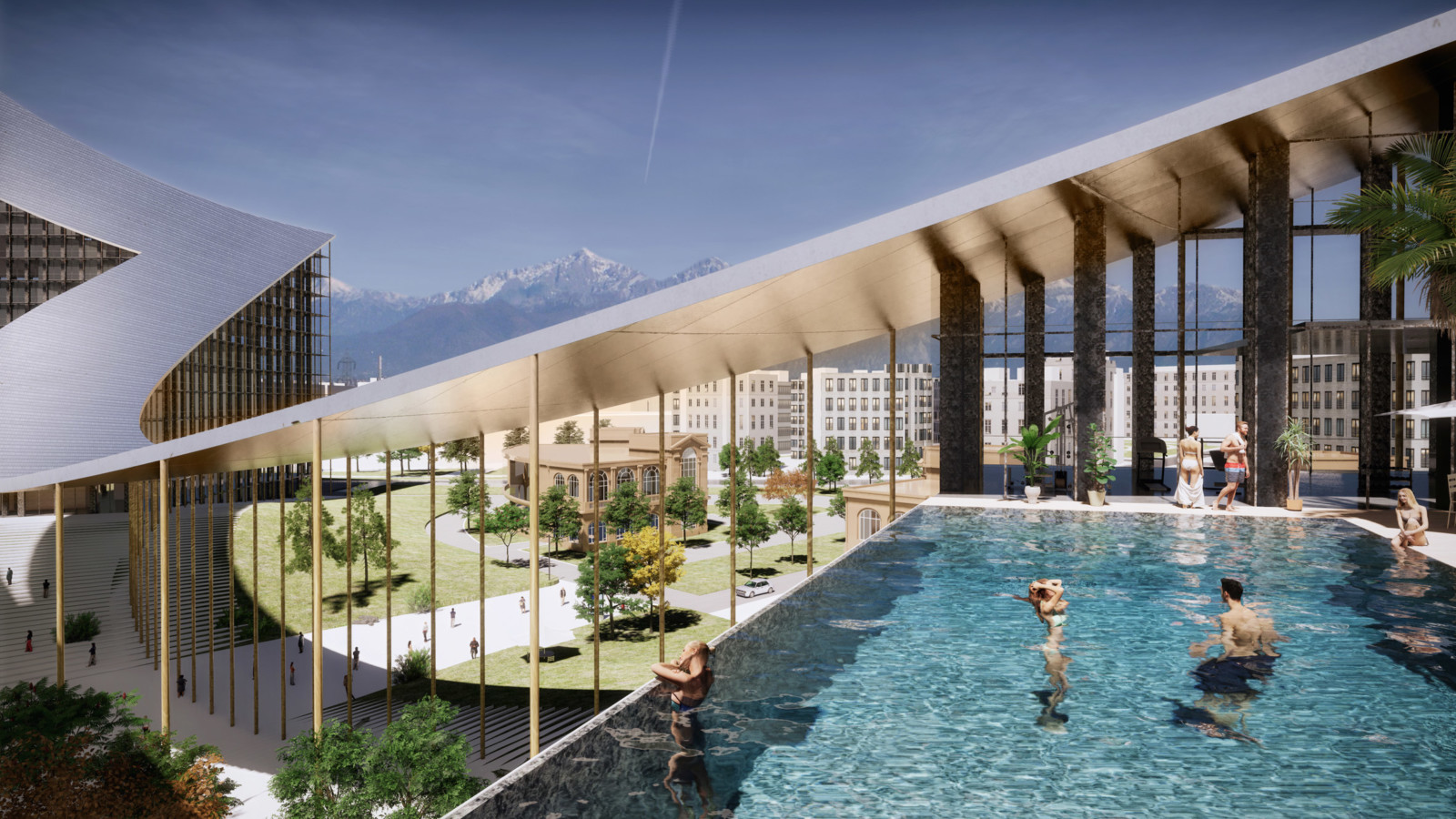
The larger of the two buildings will contain a mix of offices, while the smaller block will contain a 120-room hotel.
Publicly accessible facilities will spill out from the ground floor of each one.
兩棟建築物中較大的將包含辦公室,而較小的建築物將包含120間客房的酒店。
可供公共使用的設施將從每層的地面溢出。
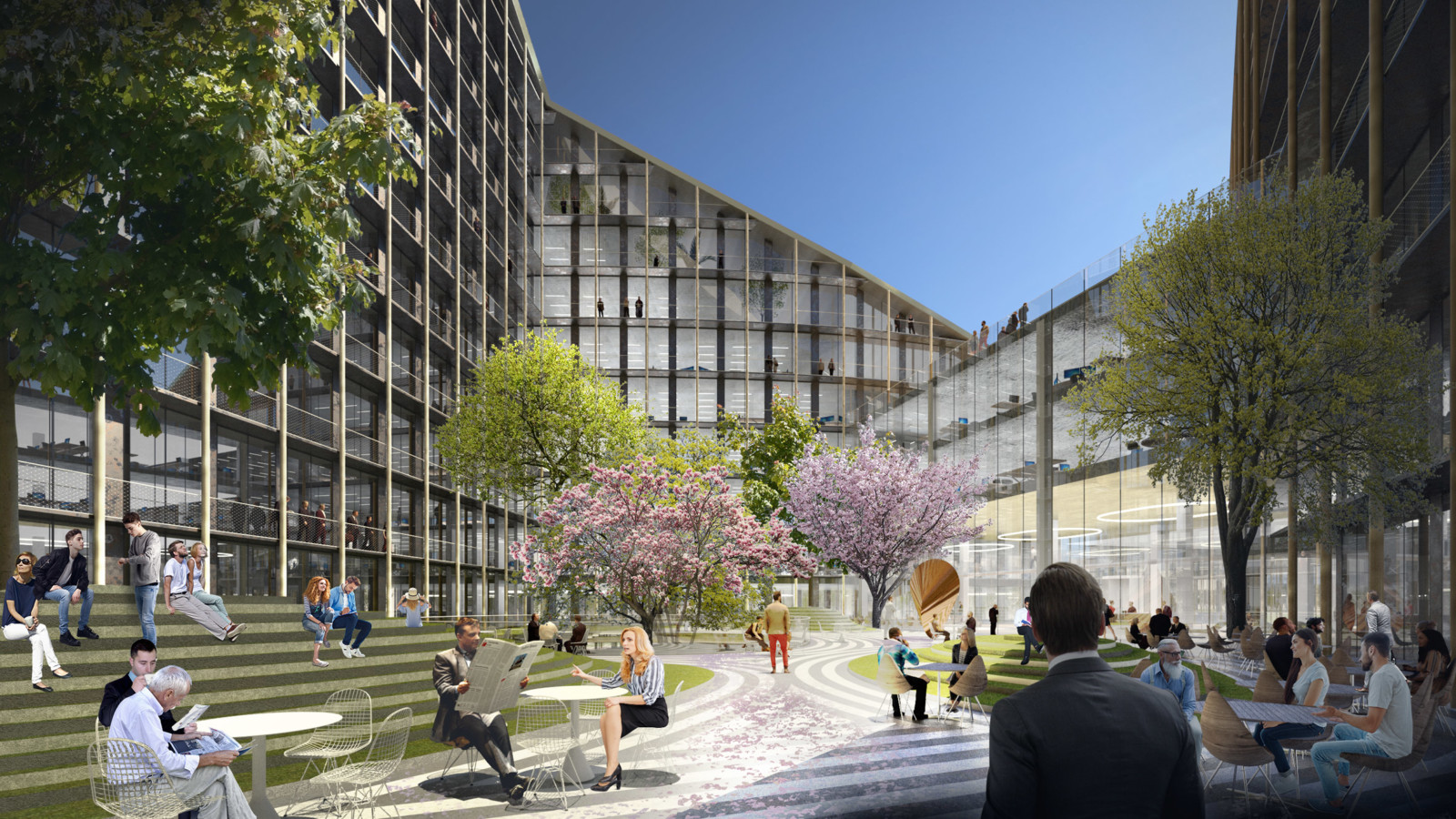
While the canopy will provide shaded, outdoor space for locals and visitors to the city, each building will also be complete with its own private courtyard.
Positioned at the centre of both blocks, these are designed to let natural daylight and ventilation into the the interiors and reduce dependence on artificial systems.
These courtyards will be filled with plants and trees that will be visible throughout the hotel and offices, forming a backdrop “lush greenery” to their pared-back interiors.
頂篷將為當地人和城市遊客提供陰涼的戶外空間,每棟建築也將擁有自己的私人庭院。
它們位於兩個模塊的中央,旨在使自然採光和通風進入室內,並減少對人造系統的依賴。
這些庭院將充滿植物和樹木,這些樹木和樹木將在整個酒店和辦公室中清晰可見,並在其內部經過修剪的內部形成了“鬱鬱蔥蔥的綠色”背景。
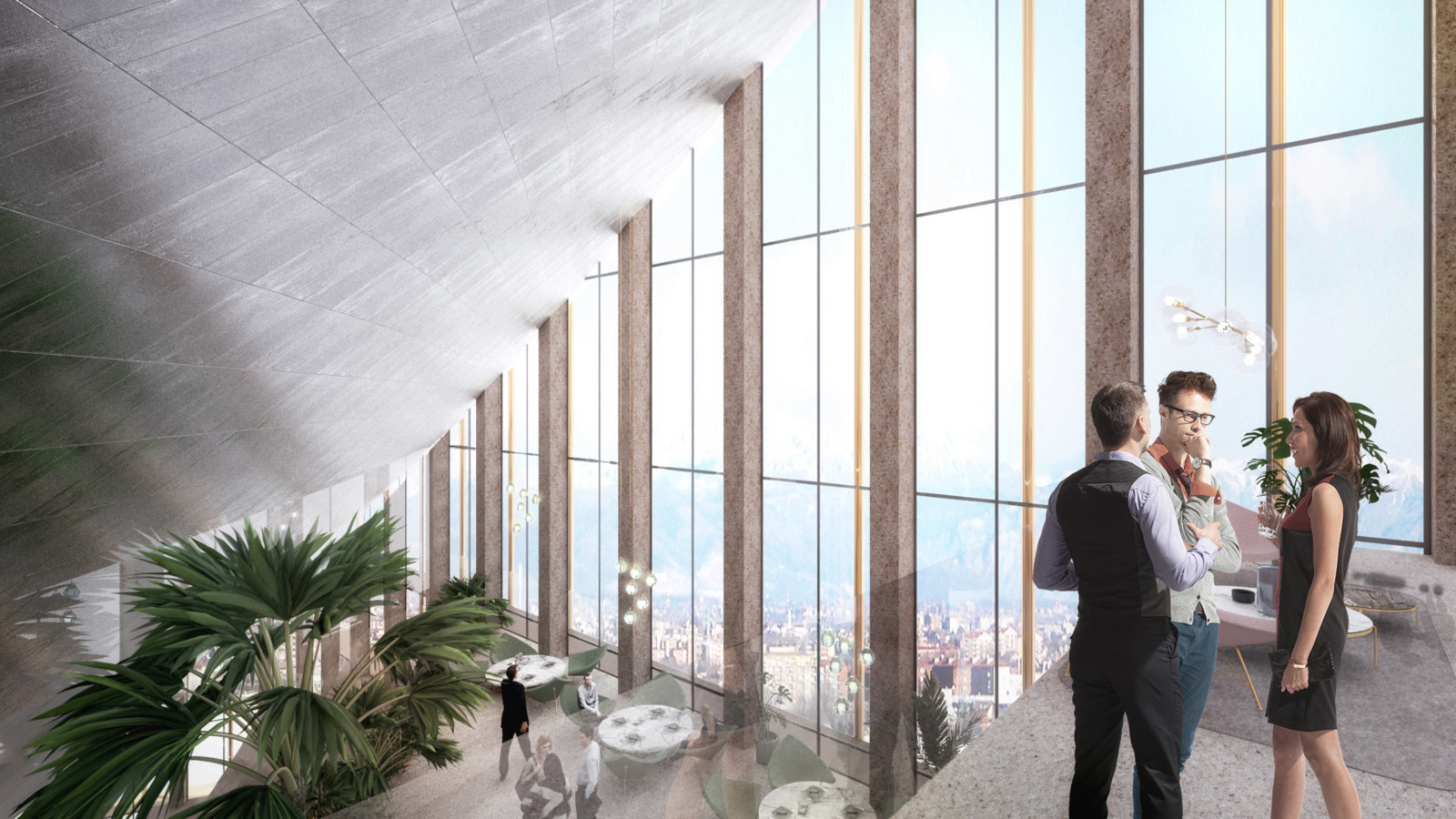
BIG is an architecture practice founded by Danish architect Ingels in 2005, and has studios in Copenhagen, New York, London and Barcelona. It is expected to complete The Portico by 2023.
Other recent projects by the studio include a twisting art gallery that bridges river in Norway and the Copenhill power plant in Copenhagen that is topped by a rooftop ski slope.
BIG是丹麥建築師英格斯(Ingels)於2005年創立的建築事務所,並在哥本哈根,紐約,倫敦和巴塞羅那設有工作室。 預計到2023年將完成The Portico。
該工作室最近的其他項目還包括在挪威河上架橋的扭曲美術館和位於哥本哈根的Copenhill發電廠,該發電廠的屋頂都是滑雪坡。
FROM:https://www.dezeen.com/2019/12/05/big-the-portico-milan-citylife-district-architecture/

